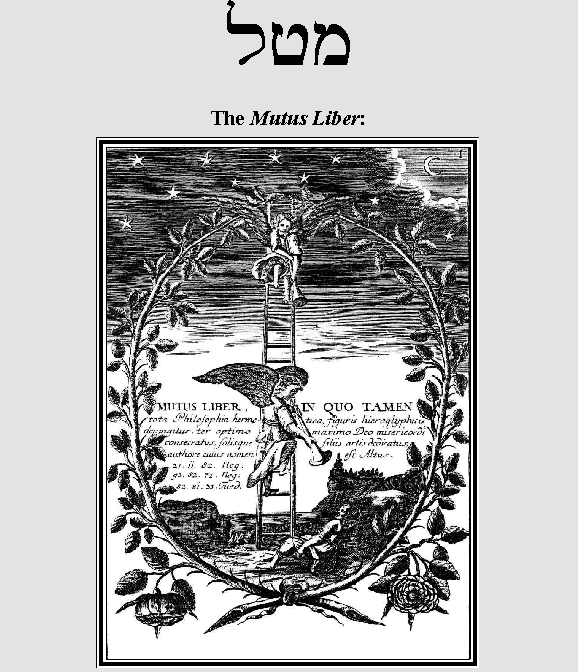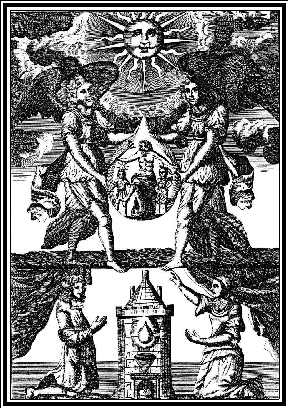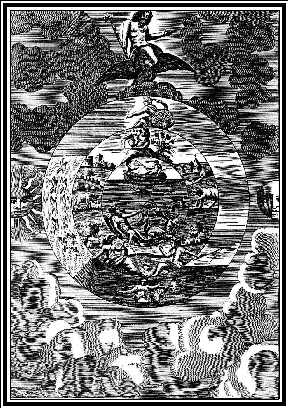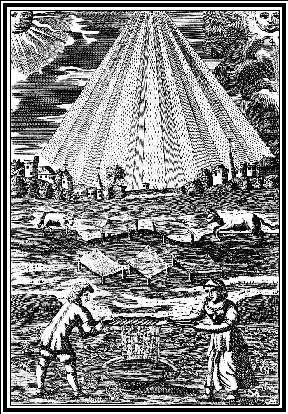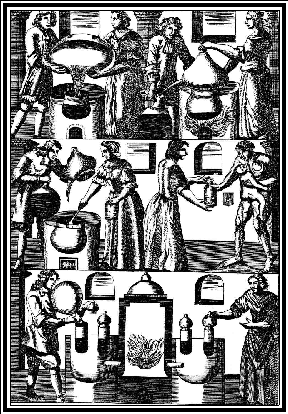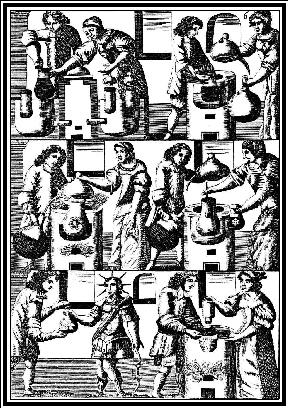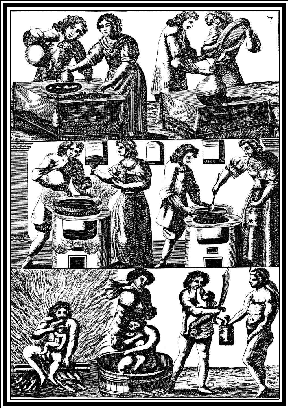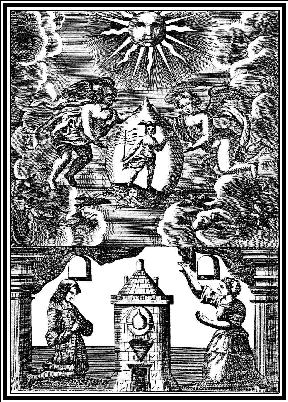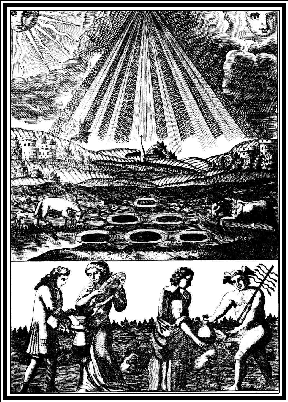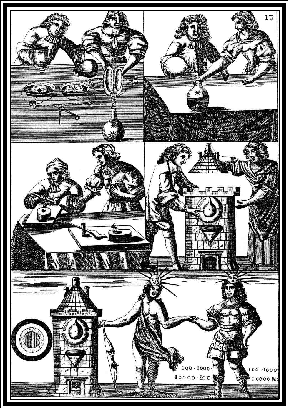|
Plate #1
Through its title, the Mutus Liber declares itself the "wordless book", yet three of its fifteen plates contain words: Plates 1, 14 and 15. Plate One contains, in Latin, the following inscription:
"The wordless book, in which nevertheless the whole of Hermetic Philosophy is set forth in hieroglyphic figures, sacred to God the merciful, thrice best and greatest, and dedicated to the sons of the art only, the name of the author being Altus."
[Adam McLean's translation.]
This is followed by the notation:
21.11.82. Neg:
93.82.72. Neg:
82.81.33. Tued:
To the experienced Qabbalist, this serves as a clear instruction to look to the original Hebrew (deduced from the fact that these notations are written from right-to-left as is Hebrew) of:
Genesis 28: 11 + 12
Genesis 27: 28 + 39
Deuteronomy 33: 18 + 28
In the Latin verse, we are being told the book is "wordless" -- separating the idea "word" from "hieroglyphic figures" such as the images of the plates; and, most significantly from Hebrew, which is a hieroglyphic aleph-beth. The term "sacred to God" in reference to the "hieroglyphic figures" which set forth the "whole of Hermetic Philosophy", is another reference to the Hebrew letters of the Torah. "Thrice best and greatest" may indicate the threefold techniques expressed in the following section on 'Qabbalistic Practice'. "Dedicated to the sons of the art only" indicates that the "hieroglyphic figures" are intended as specific Alchemical symbols. And finally, the author's self-declared name encourages the elevating and sanctifying of those very meanings (another echo of Qabbalistic practice).
The Hebrew verses (translated further on) refer to the allegory of Jacob's transmutation, as do the images presented in Plates One and Fifteen. [Plate One showing Jacob asleep beneath the ladder, angels trumpeting; and Plate Fifteen showing the conclusion of the allegory with Jacob's ascension as Israel.] This is to say, essentially, that the main body of the Mutus Liber occurs within the context of these six verses, symbolically sandwiched between images of Jacob's vision and his eventual ascension as Israel.
As a Qabbalist then, I recommend that these hieroglyphic-Hebrew verses be considered as a further elucidation of the processes described by the illustrations of the Mutus Liber. I expect they provide instruction that was felt to be too sensitive for "open" publication.
I further assert that the Latin verse of Plate One is a clear instruction to the reader that she/he is to treat the Torah verses Qabbalistically.
Torah and Qabbalist Practice:
The mythology upon which much of the Qabbalistic approach to the Torah is based goes something like this: The Torah was passed to us, from 'god', as an undivided string of Hebrew letters. They were given without the 'vowel points' which make them pronounceable. Essentially leaving it to our wisdom to divide them into words and interject the vowel points.
Thus, the old rabbinical aphorism that there are "72 ways to interpret the Torah"; meaning that there are as many ways to interpret it as there are interpreters. The more practical working approach is that there are 3 basic levels of meaning:
1) The Allegory: This is the tale being told by the letters through their common interpretation based upon accepted word groupings and vowel points. This is the level of dogma.
2) The Directive: This is the technique of looking at the individual words of the allegory, their verb-roots, and possible vowel point options. With this information, the Qabbalist arrives at an interpretation in the directive tense. [An excellent example of this technique can be found in "Sefer Yetzirah The Book of Creation: In Theory and Practice", by Aryeh Kaplan.]
3) Letter as Symbol: At this level, the Qabbalist looks at each individual letter as a symbol. Hebrew is a hieroglyphic aleph-beth and as such, each letter is symbolic of a specific meaning. The Qabbalist through meditation, study and prayer, works with the letter/symbols, considering their inter-relationships, frequency, context, charts their flow throughout, performs every trick they can think of to lure out their meanings, divining a deep (and often detailed) level of symbolism.
The Art of the Qabbalist is like that of the Alchemist. The process of looking for successively deeper levels of meaning can be equated to the Solve' of the Alchemist. The Coagula is accomplished by the Qabbalist through a process of bringing what is learned at the level of letter/symbol, up into one's awareness at the directive level. This is then integrated into the experience of the allegory.
This process elevates the merely dogmatic allegory to the state of personally meaningful symbol (i.e.: a Magical Tool).
Allegory:
GENESIS 28:11
And he lighted upon the place, and tarried there all night, because the sun was set; and he took one of the stones of the place, and put it under his head, and lay down in that place to sleep.
GENESIS 28:12
And he dreamed, and behold a ladder set up on the earth, and the top of it reached to heaven; and behold the angels of God ascending and descending on it.
GENESIS 27:28
So God give thee of the dew of heaven, and of the fat places of the earth, and plenty of corn and wine.
GENESIS 27:39
And Isaac his father answered and said unto him: Behold, of the fat places of the earth shall be thy dwelling, And of the dew of heaven from above;
DEUTERONOMY 33:18
And of Zebulun he said: Rejoice, Zebulun, in thy going out; And, Issachar, in thy tents.
DEUTERONOMY 33:28
And Israel dwelleth in safety, The fountain of Jacob alone, In a land of corn and wine;
|
|
